I’m excited to share my permaculture garden design that I created for a 3200m2 allotment in Devon, UK.
This 0.79-acre lot includes a house with passive heating, native flower area, kitchen garden with greenhouse, swimming pond, fish pond, chicken coop and garden, polyculture orchard, and more.
Check numbers below to see the described meaning of some components of the design.
Please note that I am only sharing a portion of the project, and the original design for the client contains much more information, such as exact plant species for the whole allotment and much more, check below.
- Permaculture Garden Design: 0.79 Acre in Devon, UK:
- 1. HOUSE WITH PASSIVE HEATING
- 2. TERRACE
- 3. SWIMMING POND
- 4. CHICKEN GARDEN
- 5. KITCHEN GARDEN AND GREENHOUSE
- 6. CHICKEN COOP FOR 6 CHICKENS
- 7. COMPOSTING AREA
- 8. FISH POND
- 9. WALNUT TREE GUILD
- 10. POLYCULTURE ORCHARD
- 11. NATIVE AND WILD FLOWERS AREA
- 12. CLOVER LAWN/PLAY AREA
- 13. HAZELNUT HEDGE AND MUSHROOMS ON THE LOGS
- 14. BEE GUILD
- What else is included in permaculture garden design?
Permaculture Garden Design: 0.79 Acre in Devon, UK:
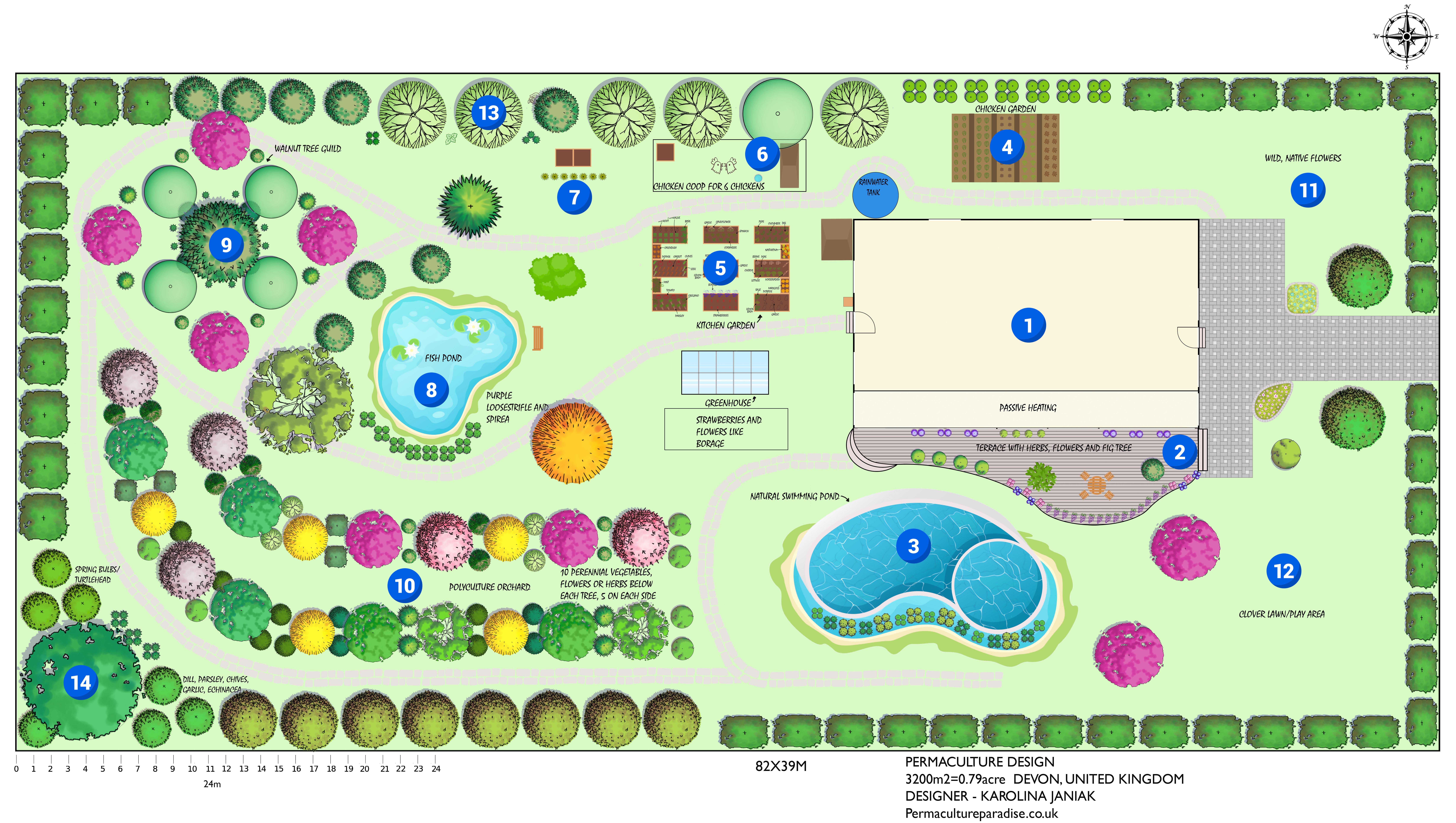
1. HOUSE WITH PASSIVE HEATING
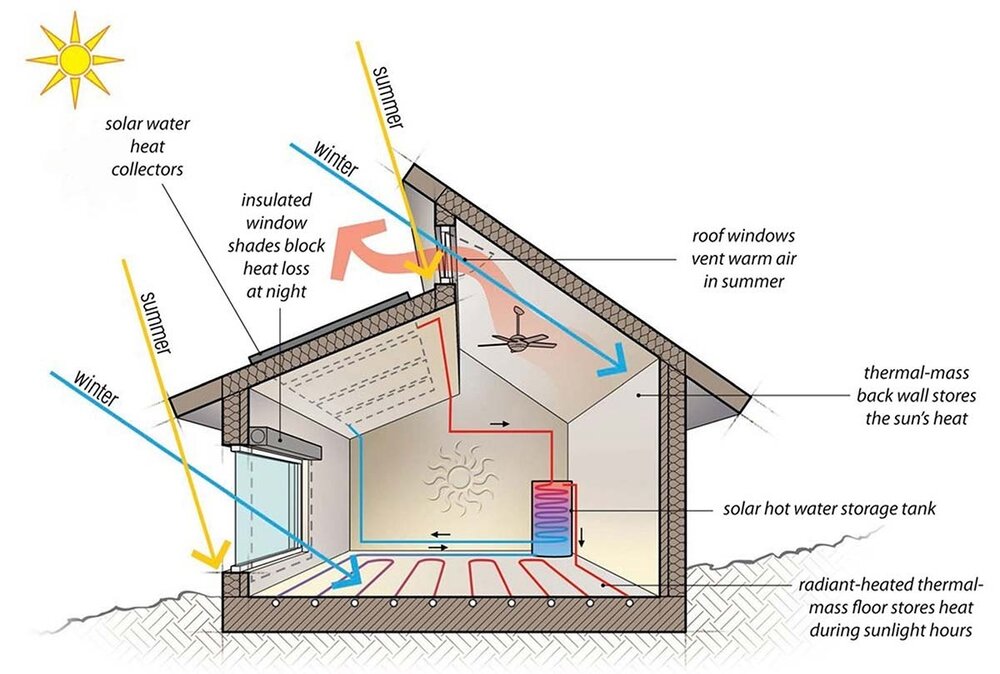
Permaculture prioritizes integrating homes with nature and utilizing natural resources.
One of the practice is passive solar heating, where the strategic positioning of windows, thermal mass, and insulation maximizes the sun’s warmth during the day and retains it at night, reducing the need for artificial heating.
Another way to enhance passive heating in a home is by adding a greenhouse, as shown in the design.
A greenhouse can serve as a buffer zone between the inside and outside of the house, allowing for heat to be captured and stored before it enters the living space.
This can help to reduce heating costs and increase overall energy efficiency.
2. TERRACE
The terrace features aromatic herbs like basil, mint, rosemary, and thyme.
A beautiful array of lavender, zinnias, and petunias attracts pollinators.
Blueberry bushes grow in pots on the terrace, while climbing vines adorn the balustrade.
A sitting bench is placed next to the fig tree and Japanese Persimmon.
3. SWIMMING POND
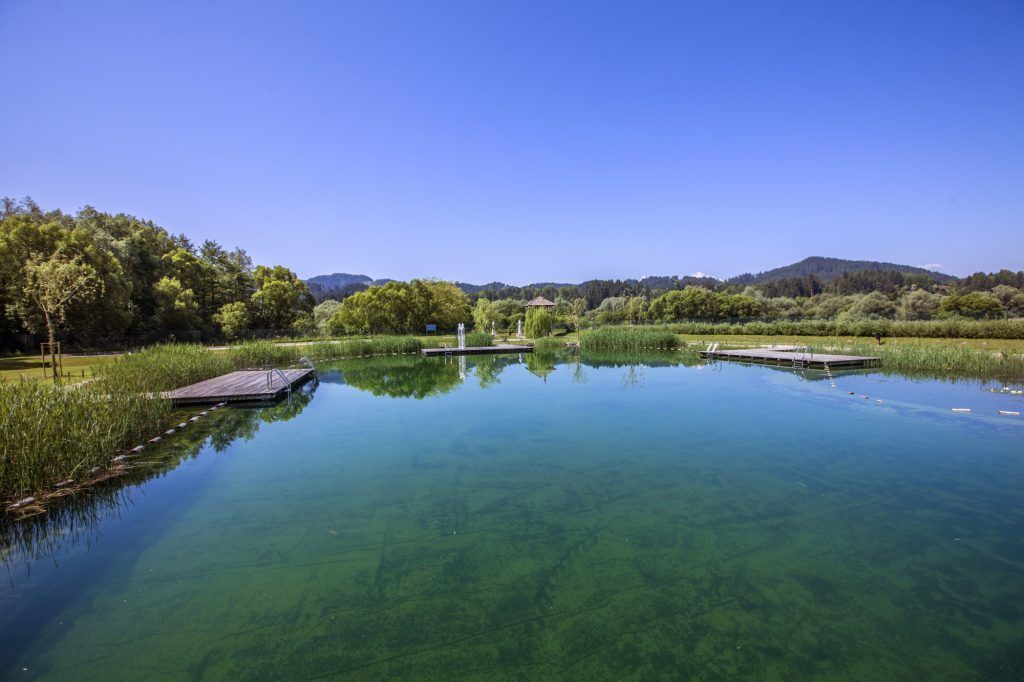
A swimming pond is a great addition to a permaculture garden.
It provides a natural and beautiful feature for the landscape, while also providing a place for recreation and relaxation.
Swimming ponds are also a sustainable alternative to traditional swimming pools, as they require less maintenance and use no chemicals.
They can also provide habitat for aquatic plants and animals, contributing to the overall biodiversity of the garden.
4. CHICKEN GARDEN
A chicken garden is an essential part of a permaculture garden design.
This provides a sustainable source of food for the chickens while also reducing the cost of feed for the owner.
It involves growing vegetables and grains that are specifically for chickens to eat.
It also ensures that the chickens receive a balanced diet, which can improve their health and egg production.
Additionally, the chicken manure can be used as a natural fertilizer for the garden, contributing to the overall health and productivity of the garden.
5. KITCHEN GARDEN AND GREENHOUSE
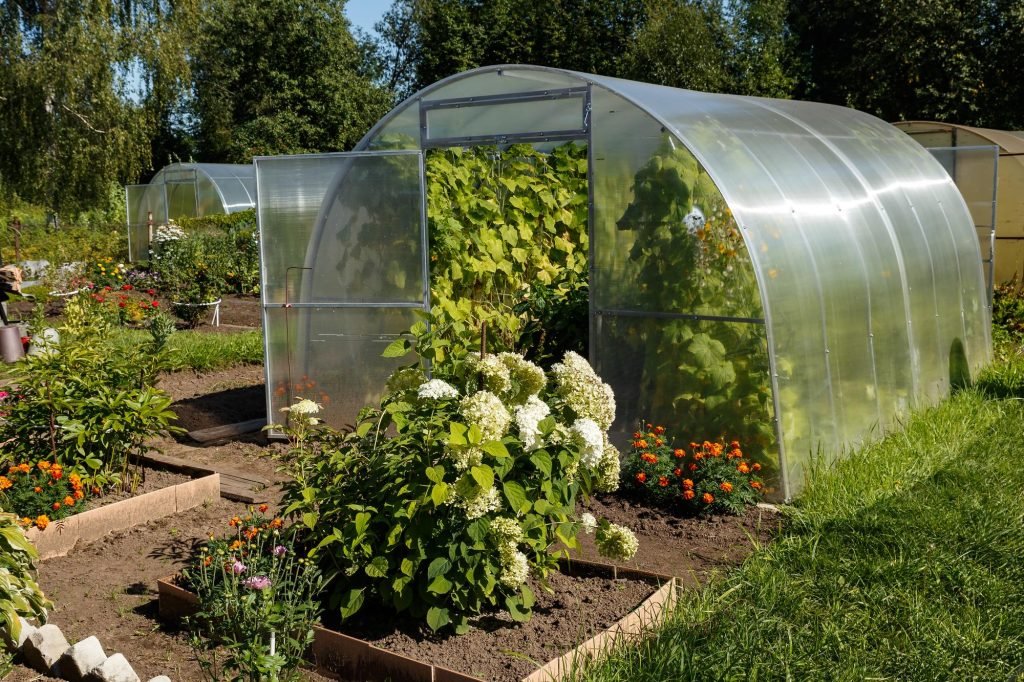
A kitchen garden is a small-scale garden near the house where you grow variety of vegetables, herbs, and fruits, as well as some flowers for pollinators.
It is usually designed to be easily accessible from the kitchen, making it convenient to harvest fresh produce for meals.
Mini polytunnels and cold frames extend the growing season, protect plants from cold weather and frost, and create controlled microclimates for increased productivity and a wider range of plant cultivation.
It is possible to grow food all year round with cold frames and in greenhouse.
By growing food on-site, the need for transportation and packaging is reduced.
In addition, kitchen gardens can be designed to work in harmony with the surrounding environment, using techniques such as companion planting. mulching and natural pest control.
This can increase biodiversity and improve soil health, as well as reduce the need for synthetic fertilizers and pesticides.
6. CHICKEN COOP FOR 6 CHICKENS
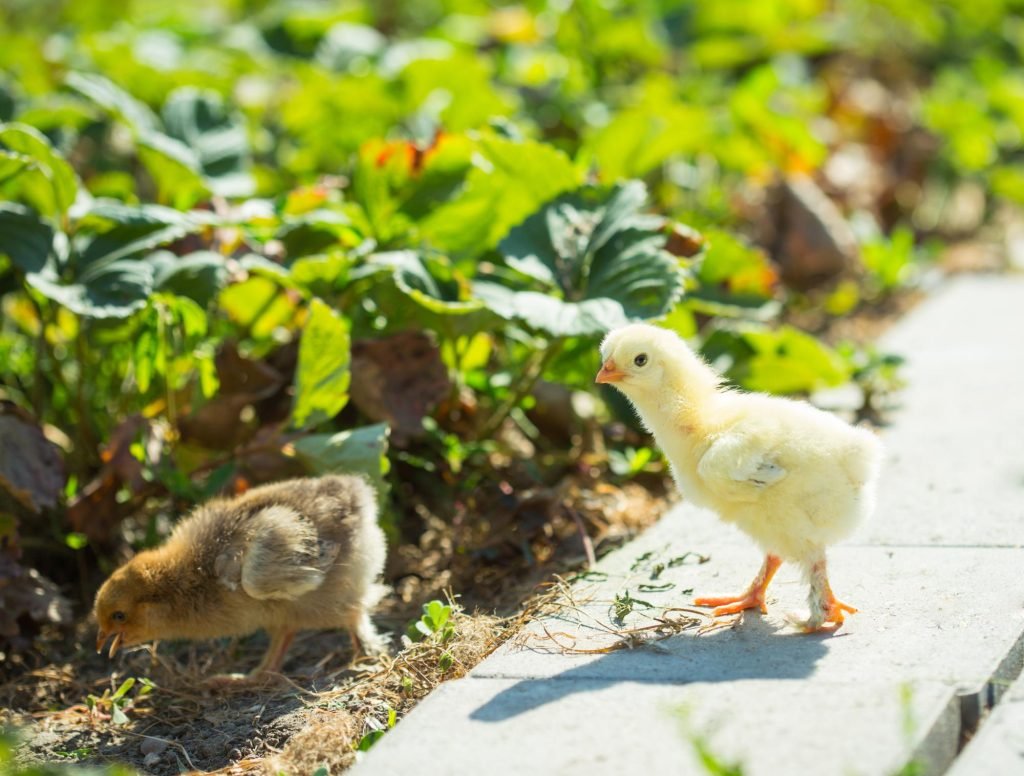
Raising chickens, ducks, and other farm animals is important in permaculture as it provides a source of food, improves soil quality, and creates a more diverse and resilient ecosystem.
Farm animals can reduce reliance on industrial agriculture, help to fertilize soil, control pests and weeds, and support a wider variety of plants and animals.
7. COMPOSTING AREA
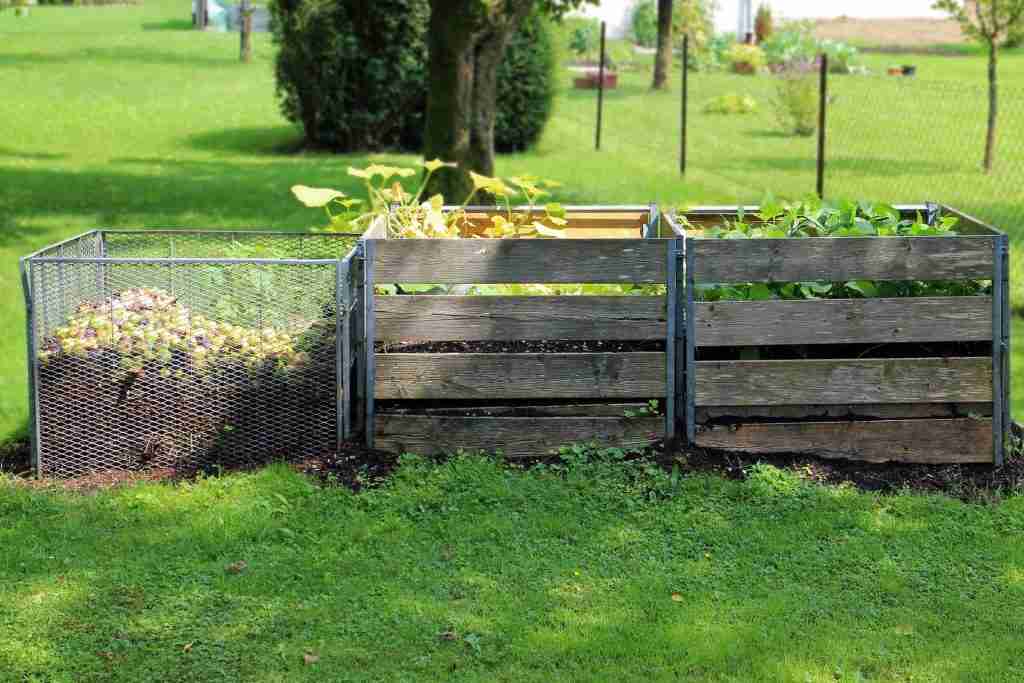
Compost heaps provide a controlled environment for the decomposition of organic materials, such as kitchen scraps, leaves, and grass clippings, resulting in nutrient-rich compost, reducing the need for synthetic fertilizers, saving money, and improving plant health and productivity while minimizing waste sent to landfills.
8. FISH POND
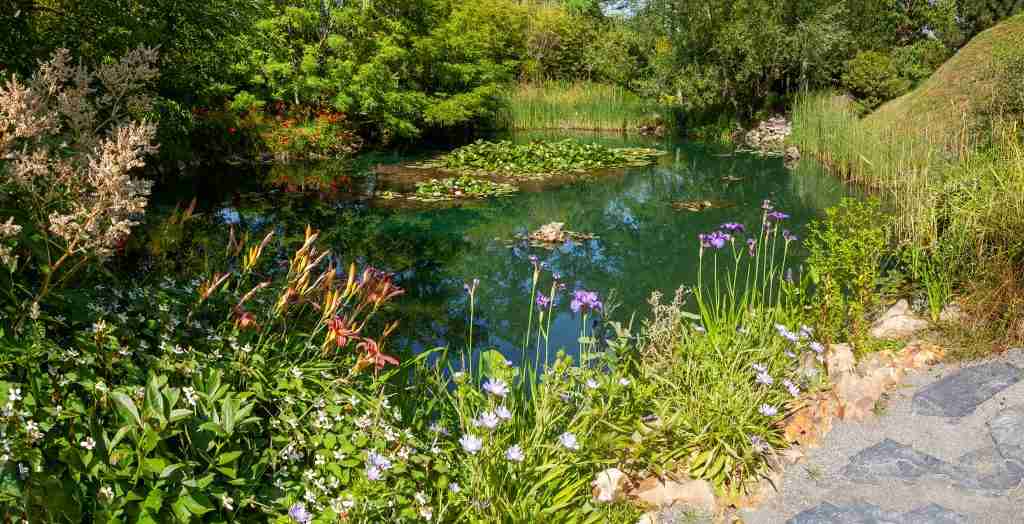
Fish ponds integrated with aquatic and bog plants serve as multifunctional elements, providing nutrient cycling, water conservation, wildlife habitat, aesthetic appeal.
It is a sustainable source of food, including fresh fish and edible greens, contributing to the overall sustainability, resilience, and food self-sufficiency of the permaculture garden.
9. WALNUT TREE GUILD
The central walnut tree was originally on the property.
It will be surrounded by other plants such as black cherries, mulberries, gooseberries, raspberries, and comfrey.
The central walnut tree provides shade and shelter for the other plants in the guild, as well as for animals such as birds and insects. The tree also produces nuts, which can be harvested for food or used as a source of income.
The other plants in the guild have specific roles that complement the walnut tree.
Mulberries can reduce the growth restricting effects of walnut trees when planted at the drip line between the walnut and susceptible tree.
Mulberries also yield an edible fruit that is loved by both humans and animals.
Black cherries, for example can tolerate being a neighbor to walnut and produce edible fruits.
Gooseberries and raspberries can provide additional sources of food, and can help to attract pollinators and other beneficial insects.
Comfrey is another important plant in the guild, as it can be used to make compost tea and other fertilizers.
The deep roots of comfrey can also help to bring up nutrients from deep within the soil, making them available to the other plants in the guild.
Overall, the walnut tree guild is an example of how permaculture design can create a self-sustaining ecosystem that provides a variety of benefits for both humans and the environment.
10. POLYCULTURE ORCHARD
Polyculture orchards offer many advantages over monoculture orchards.
They have natural resistance to pests and diseases, are more resilient to environmental changes, and create a self-sustaining ecosystem.
By including nitrogen fixing species, shrubs, and perennials, the need for synthetic fertilizers and pesticides is reduced, making the orchard more sustainable and environmentally friendly.
11. NATIVE AND WILD FLOWERS AREA
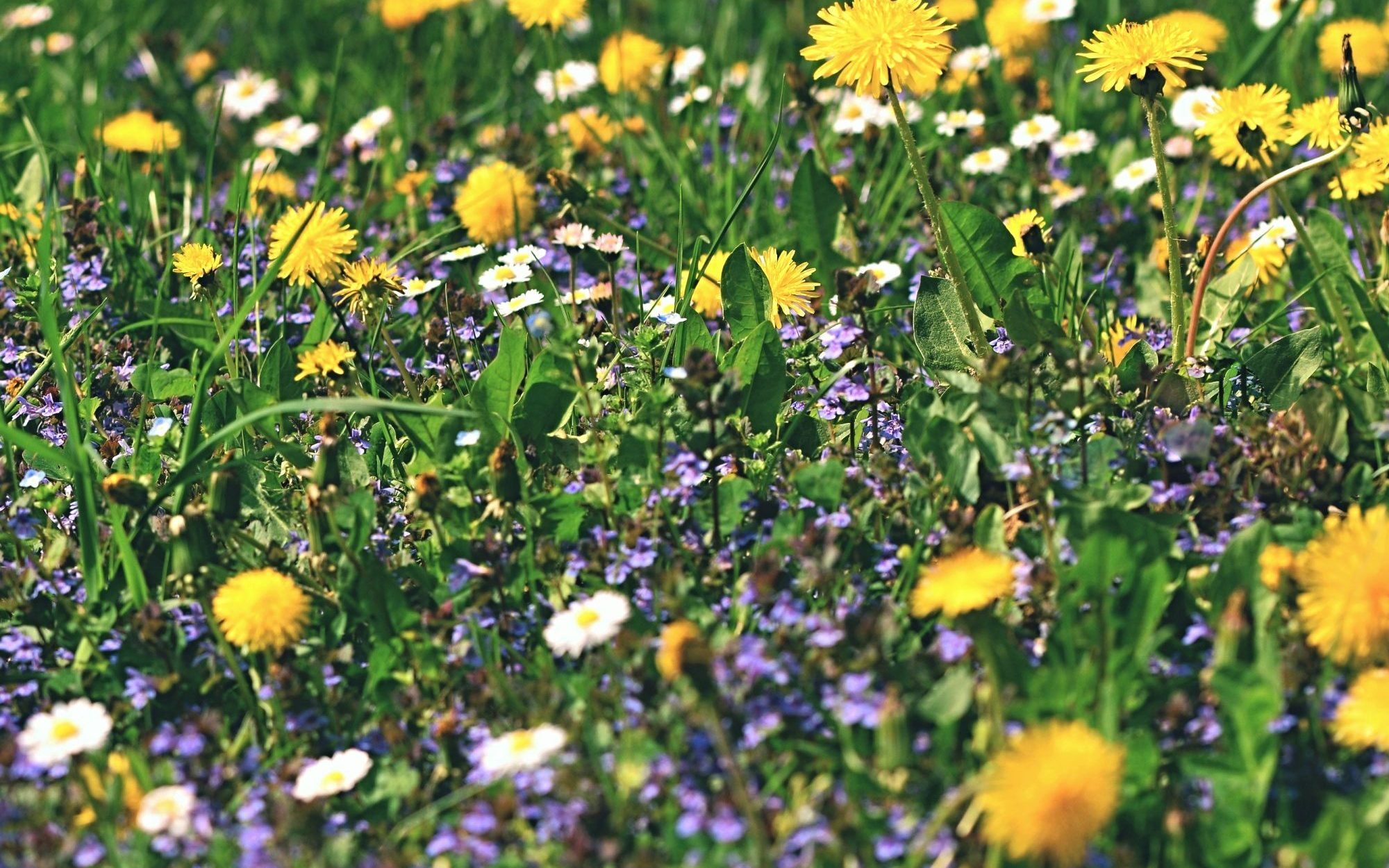
In permaculture gardening, it is important to have areas with wild and native flowers.
These areas can foster biodiversity and attract beneficial insects, such as bees and butterflies, which can help with pollination.
Additionally, native plants are often well-suited to the local climate and soil, requiring less maintenance.
These plants not only add beauty to the garden but can also serve as a food source for wildlife, such as birds.
Areas of native flowers, bulbs, etc., are scattered throughout the entire design area.
12. CLOVER LAWN/PLAY AREA
Clover lawns are eco-friendly alternatives to traditional grass lawns, offering low maintenance, drought tolerance, nitrogen fixation, and pollinator attraction.
They are resilient, require fewer chemicals and water, and promote environmental sustainability.
Permaculture gardens can also include spaces for relaxation, a kids’ play area, a picnic spot, or even a fireplace – it can encompass whatever the owners’ dream is.
Living in harmony with nature requires having space to relax and enjoy the surroundings.
13. HAZELNUT HEDGE AND MUSHROOMS ON THE LOGS
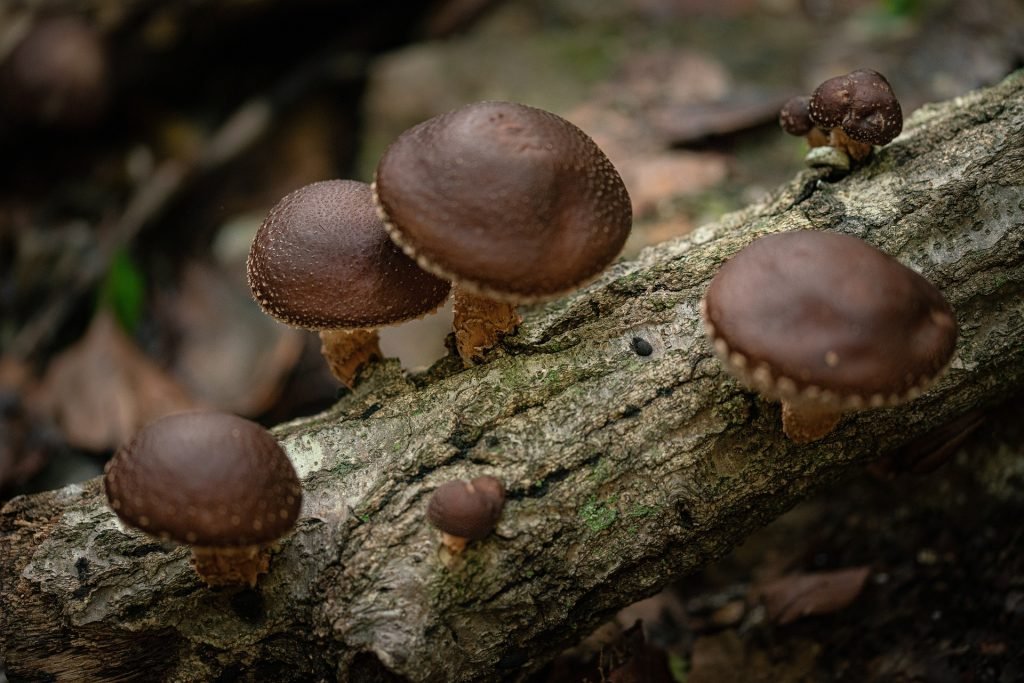
A hazelnut hedge is a great addition to any garden or farm.
Not only can it provide a natural barrier or fence, but it can also be a source of food and income.
When grown with elderberry and some fruit bushes, the hedge can create a diverse ecosystem that supports a variety of wildlife and beneficial insects.
Additionally, it is possible to utilize the space under the bushes to cultivate mushrooms, which can provide another source of income and food source.
14. BEE GUILD
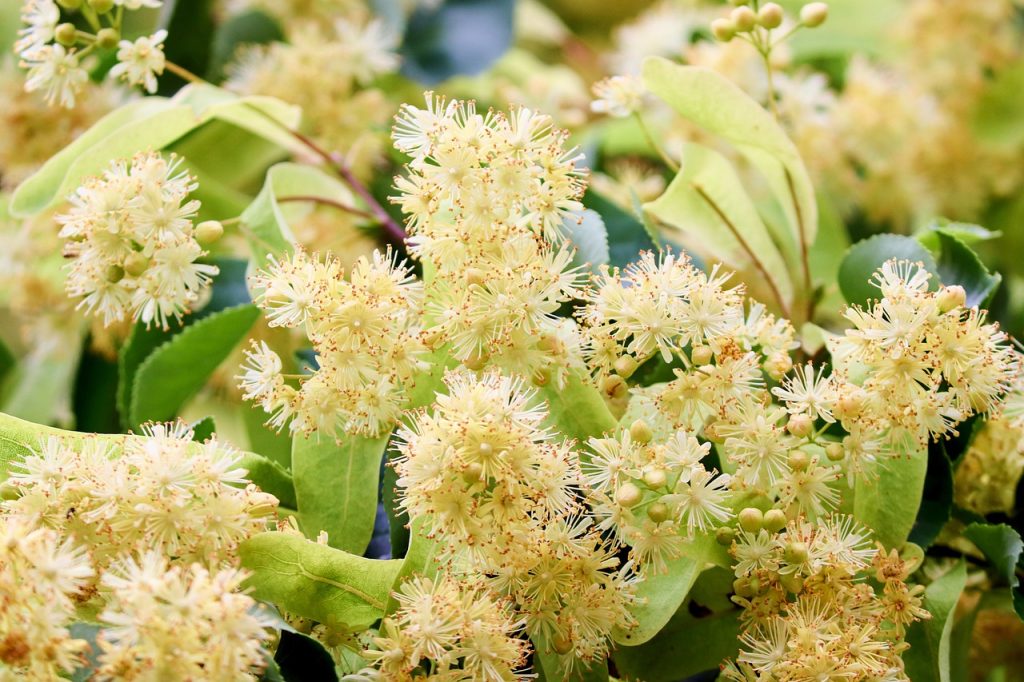
The linden tree in the middle was originally on the property.
The linden tree provides a reliable source of nectar for bees, which helps them to produce honey and pollinate other plants in the garden.
Planted around hip bearing shrub roses, lovage, echinacea, and other plants provide additional sources of food for bees, as well as other beneficial insects.
By creating a diverse and interconnected ecosystem in the garden, we can help to support the health and well-being of our local pollinator populations.
What else is included in permaculture garden design?
With careful planning, food can be grown all year round. Growing plants in polyculture and utilizing methods such as succession planting, employing season extension techniques, mulching, and cultivating perennial crops allow for a continuous harvest throughout the year.
In the design are included:
1. Garden plan with plants placement and best varieties.
2. Specific plant list with quantities needed, including suppliers and their prices.
3. 3-4 years crop rotation plan.
4. Companion planting.
5. Succession planting timetable.
6. Cover crops.
7. Spacing between plants, organic pest management and other useful information for beginner gardeners if needed.
8. Tips on how to increase soil fertility.
9. Implementation task list with a practical timetable.
10. An estimated cost analysis for the full implementation of the design.
11. Useful tips, ideas, tools and equipment to consider for implementation, and more.
Order your Permaculture Design tailored to suit any scale, from small gardens to vast farms, providing you with an opportunity to cultivate sustainability, maximize productivity, and reconnect with nature in a harmonious and regenerative way.
Creating a permaculture garden design requires careful planning and consideration of all the different components. The garden should be designed to be functional, productive, and aesthetically pleasing. I hope that my design for this Devon, UK, lot will inspire others to create their own permaculture gardens. Remember, a permaculture garden is a sustainable, self-sufficient, and natural ecosystem that benefits both the environment and the homeowners.
Learn more:
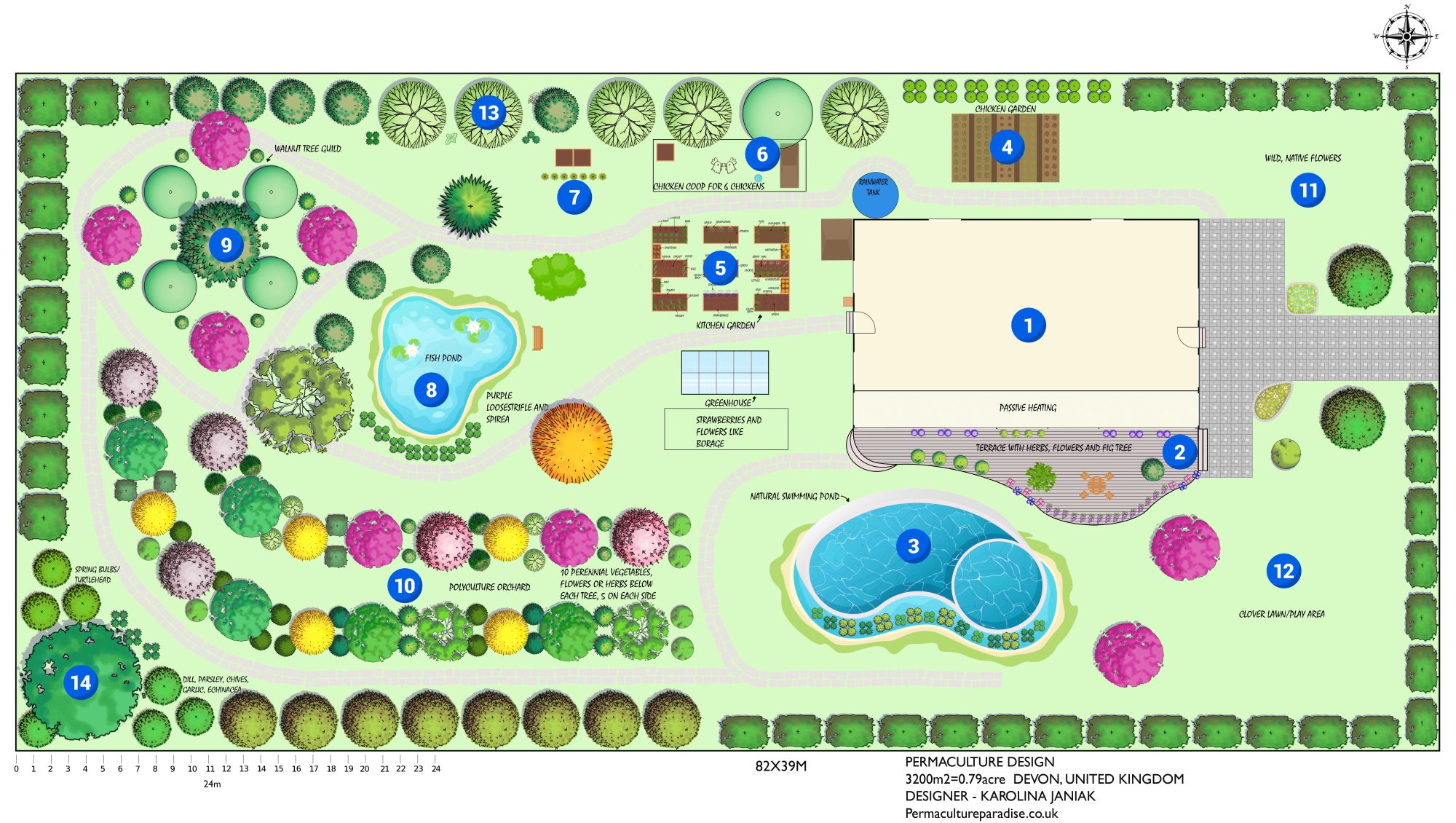
You are so interesting! I don’t believe I’ve truly read a single thing like this
before. So great to find somebody with a few original thoughts
on this issue. Really.. man thanks for starting this up.
This web site is something that’s needed on the web,
someone with a little originality!
Thank you so much for your thoughtful words! I’m glad to hear that you find my perspective unique and refreshing. It’s encouraging to know that my content resonates with you. I appreciate your support and hope to keep providing interesting insights!
I couldn’t leave your website without mentioning how much I appreciate the consistent information you provide to your visitors. I will definitely be returning often to see what new posts you have.
Thank you for your kind words! Your support means a lot, and I look forward to sharing more new posts. See you soon!
Impressive posts!
Thank you for sharing your precious knowledge. Just the right information I needed.
Thank you for your kind words! I’m glad to hear that you found the information helpful. Sharing knowledge about permaculture is a passion of mine, and I appreciate your support. If you have any specific topics you’d like to see covered, feel free to let me know!